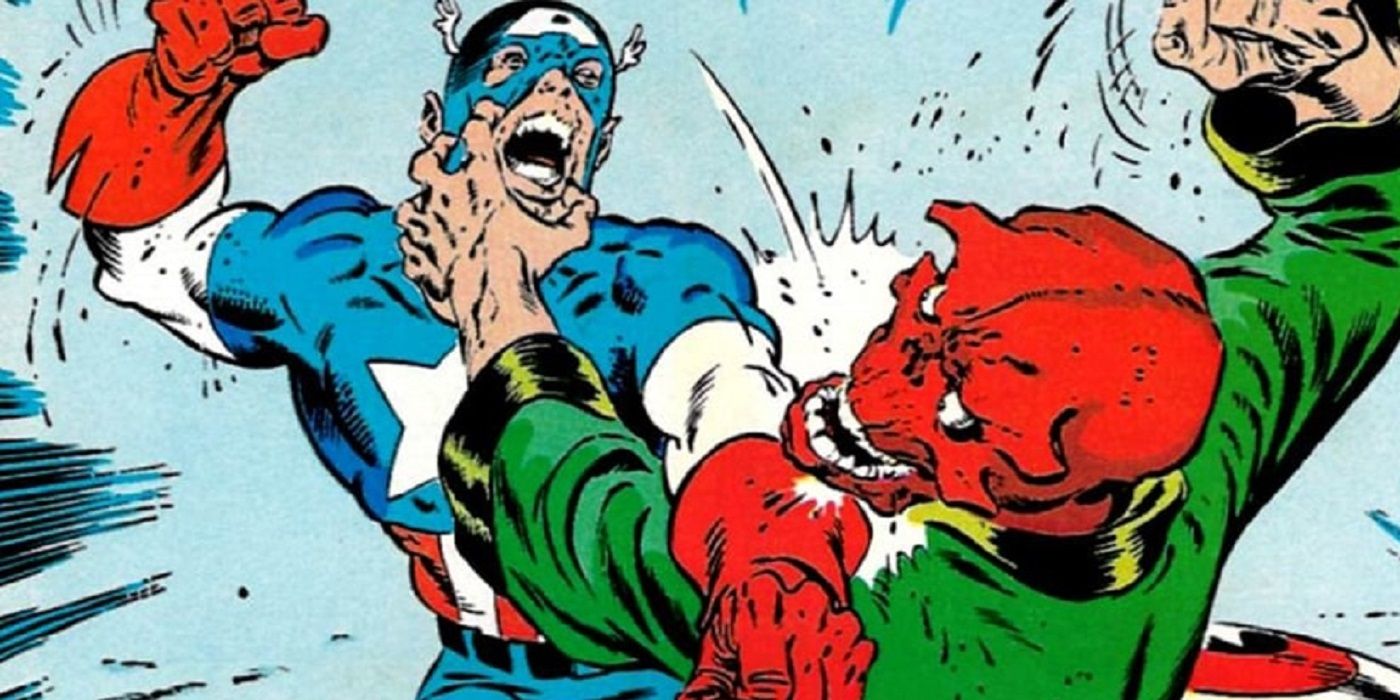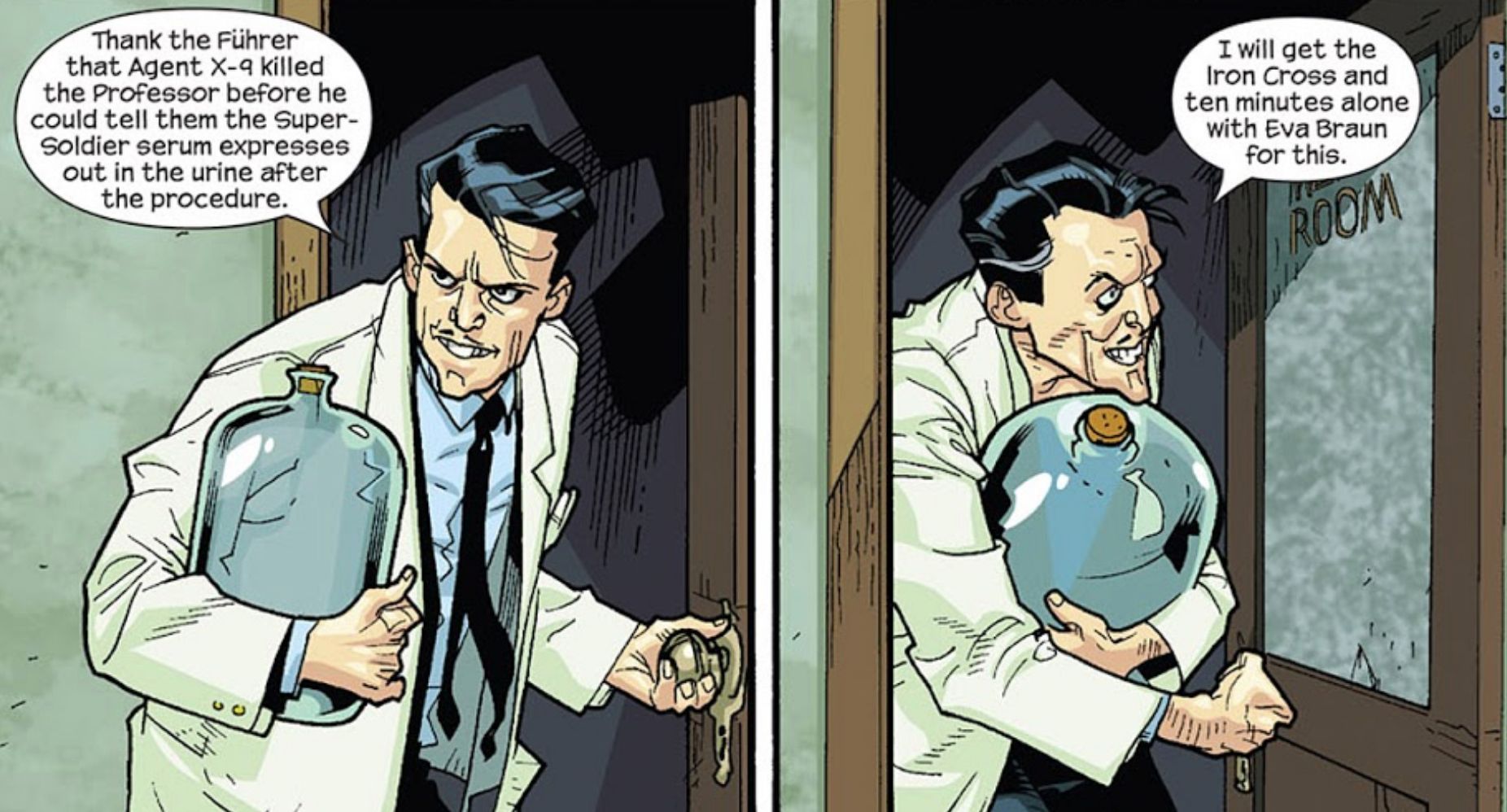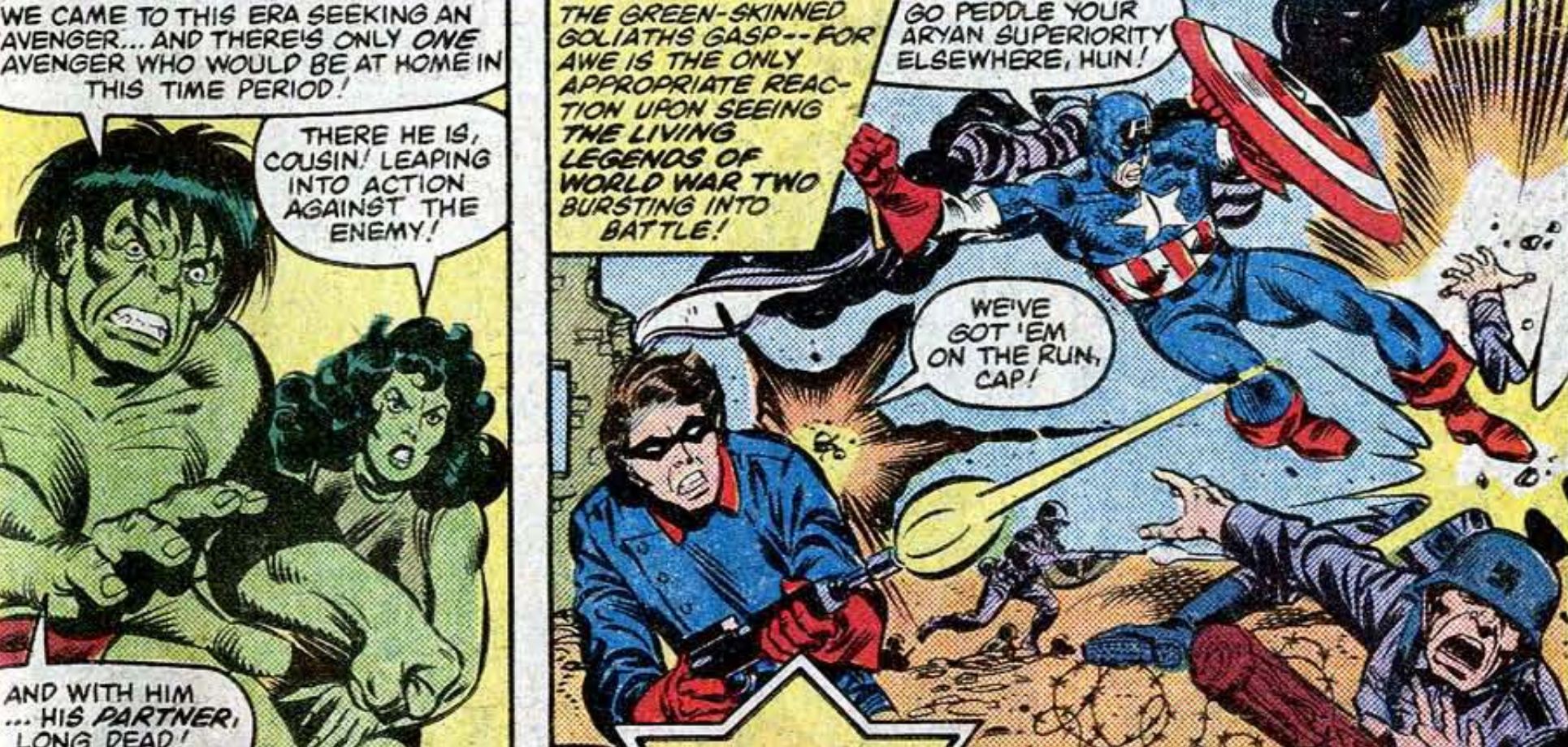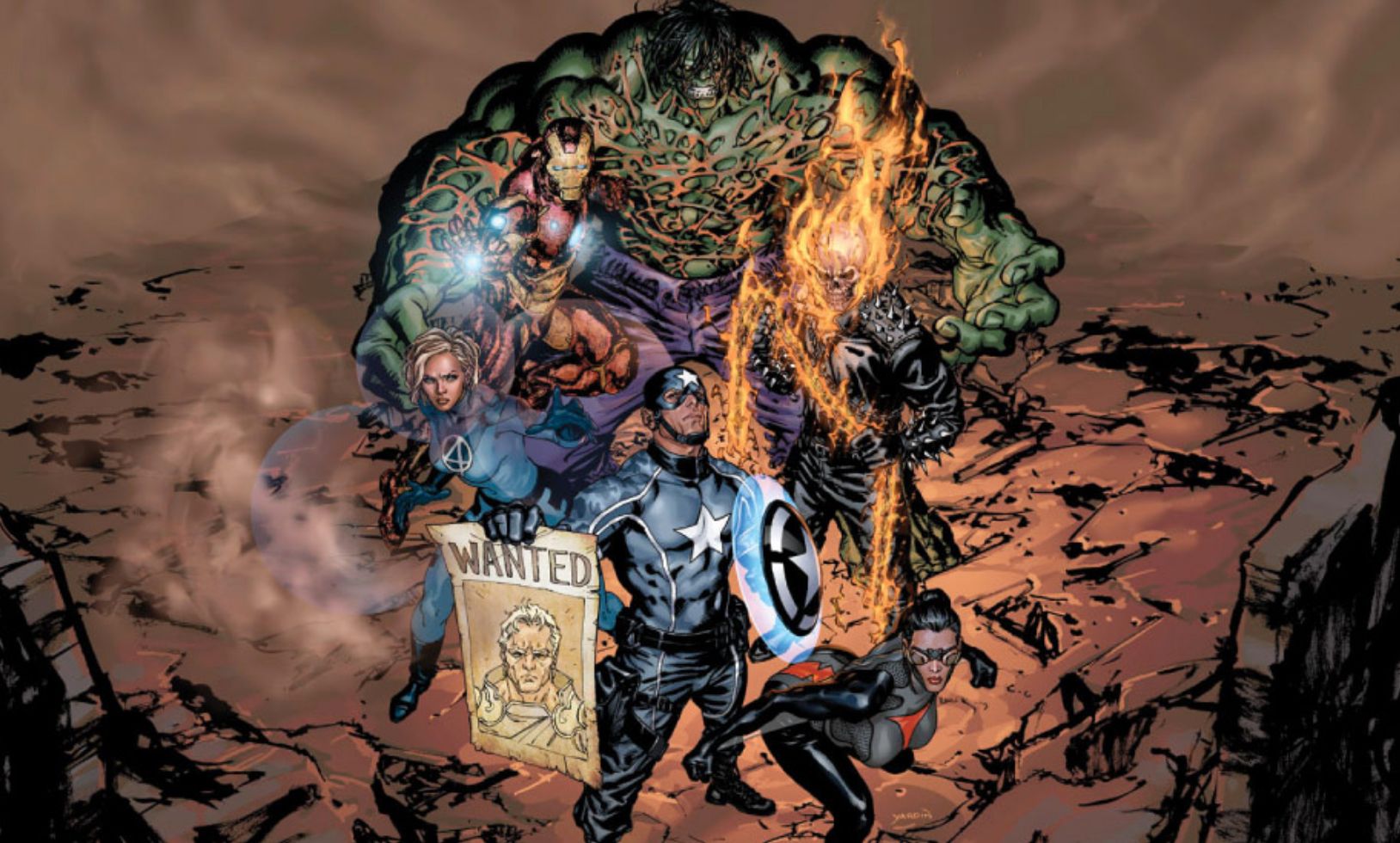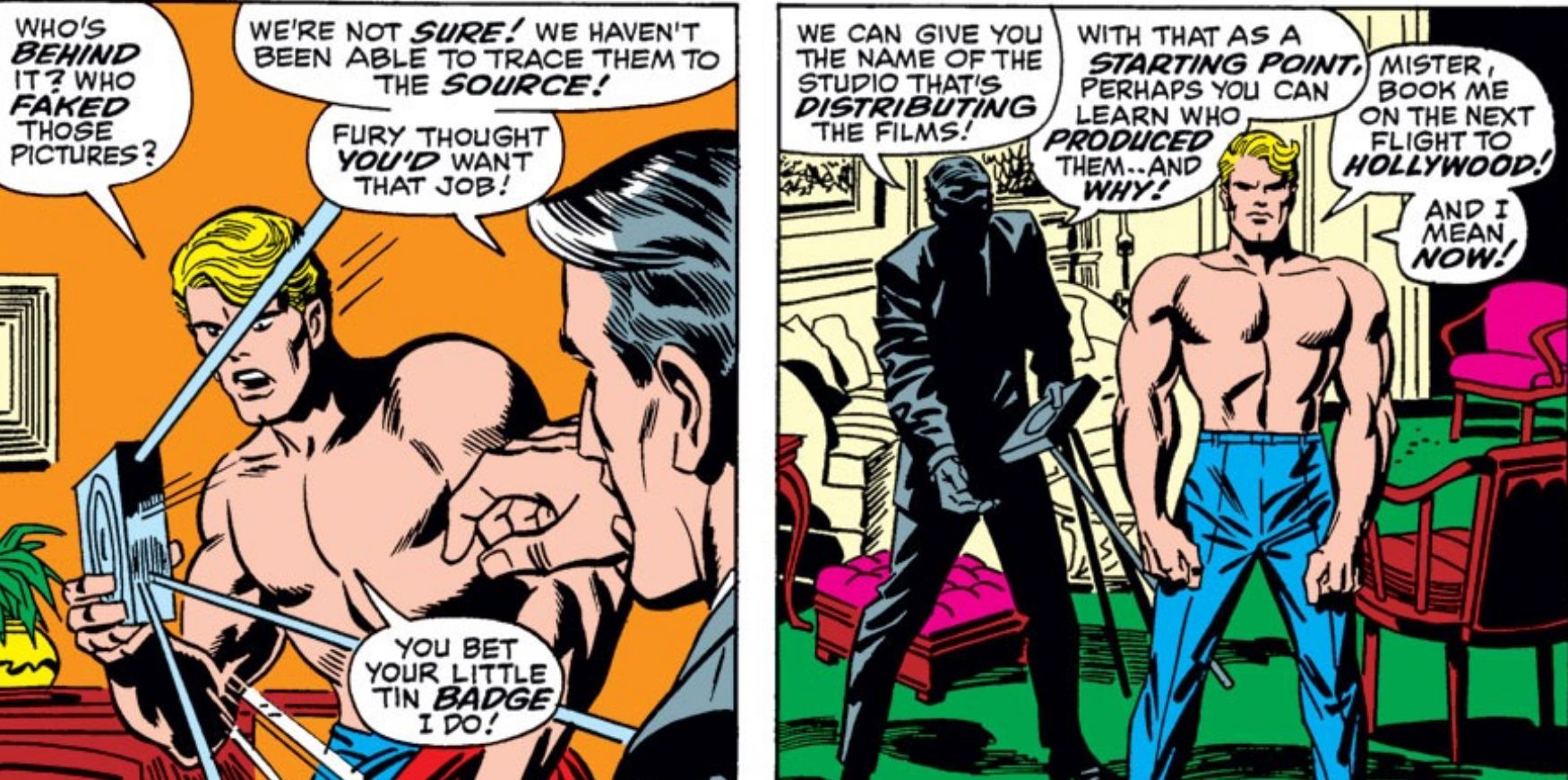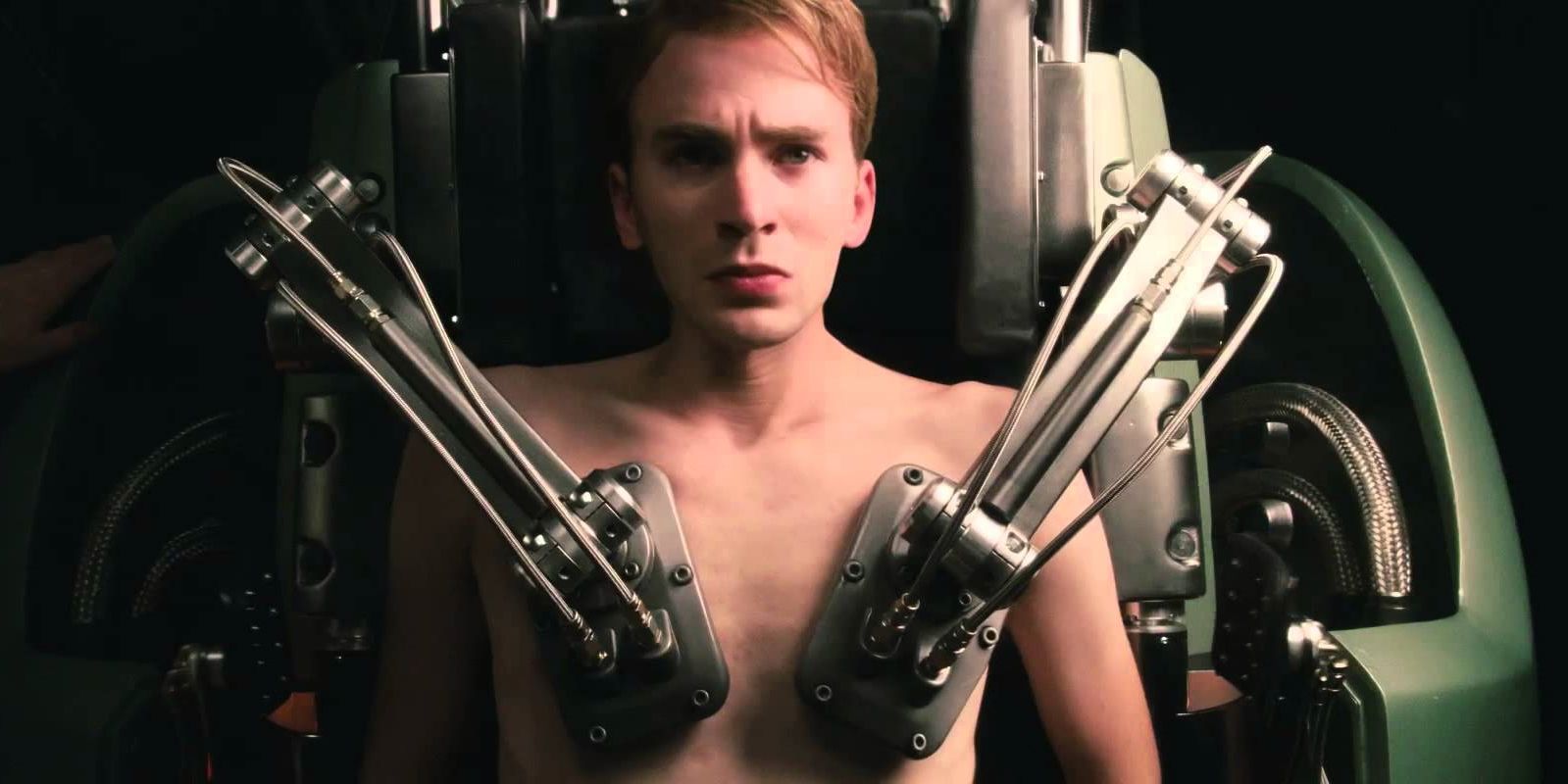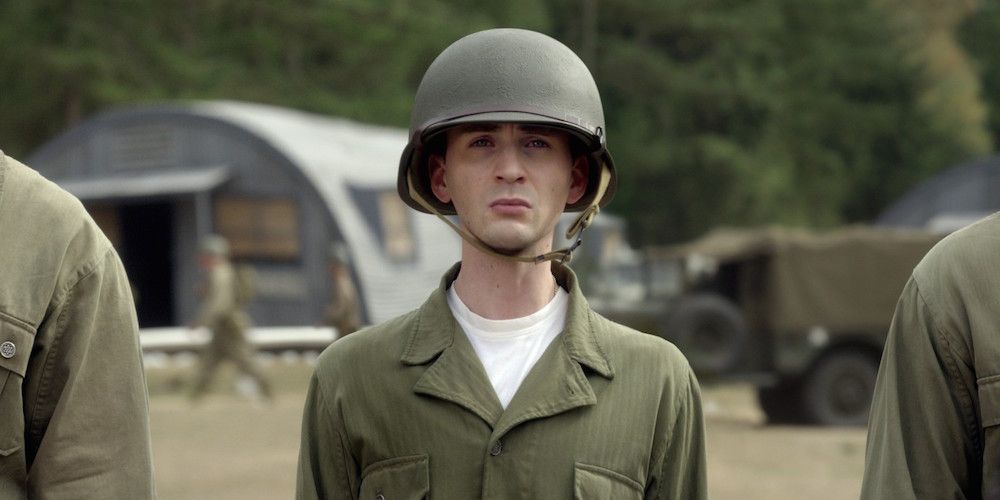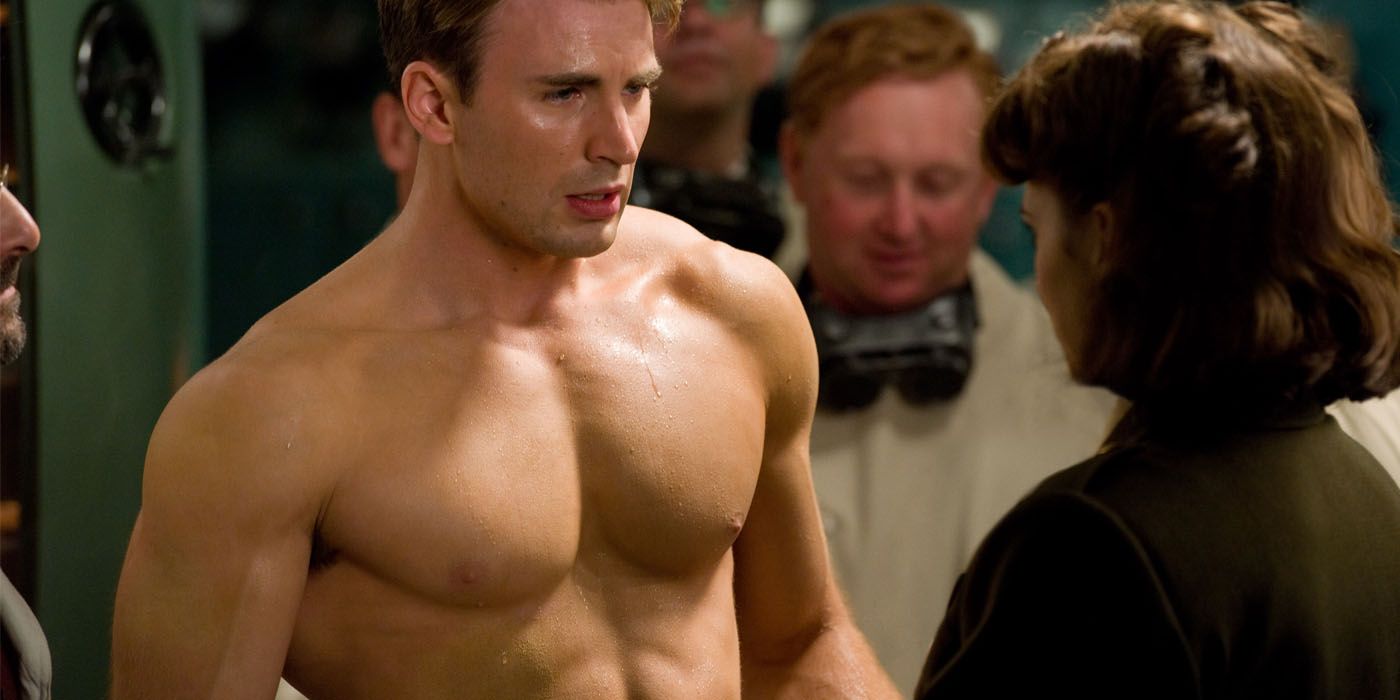When Captain America made his debut in Marvel Comics in 1941, could creators Joe Simon and Jack Kirby have known what an icon he would become?
Many writers and artists have taken on the character over the last 70 years, making him one of Marvel’s most well known creations.
When the character debuted, Steve Rogers went from a mild mannered man looking to join the army to the subject of a super soldier experiment.
Steve, infused with a serum that made him a “peak human,” found himself with increased strength, stamina, durability, and more. His body was put through its paces in training. As a result of the changes made from the serum, his body also changed on a fundamental level.
In the Marvel Comics and the Marvel Cinematic Universe, Captain America’s transformation occurred relatively quickly thanks to the serum and vitarays.
Other media, including novels published in the 1960s, added more changes. The result was always the same, though: a nearly superhuman man who can perform superfeats without even breaking a sweat.
If you’ve ever wondered just how Captain America achieves some of those feats, or what the consequences are, we’ve got you covered with the 20 Crazy Facts About Captain America’s Body.
Rapid Aging
After being infused with a super soldier serum in his younger days (and being placed on ice for a few decades), Captain America’s body is as young as it was in World War II... or is it?
It’s the super soldier serum that makes Captain America’s body appear as young as it does.
The serum allows new cells to be born, and old cells to be repaired very quickly. In fact, the growth and repair occurs even faster than older cells breaking down and dying, making Cap appear perpetually young.
If the serum ends up inactive, or somehow removed from the body of Steve Rogers, his body begins to rapidly age.
Without the serum, the cells break down faster than his body can keep up, resulting in a Captain America who looks his age -- or even older.
Replenishing Serum
In the 1980s, politicians pushed the “Just Say No” campaign pretty hard at adolescents. Even Marvel comics got in on the act. When they did, it led to a Captain America storyline in 1990 that saw Cap giving up his “drug.”
Issue #378 saw Captain America lose all the effects of the serum that placed him at peak human health. A complete blood transfusion removed the serum from his body.
The serum, it was revealed, regularly replicated and replenished itself while in his blood.
Captain America had to learn how to be a superhero without the addition of the super drug to his bloodstream. By the end of the issue, he decided he had to “just say no” like everyone else.
The serum was eventually retconned to not actually be a drug in his system, but more like a virus that changed his own genetic material.
Invasions Of The Mind
Despite Captain America’s body being at the peak of human conditioning, there’s one major organ that’s susceptible to hostile forces: his brain.
The body of Steve Rogers is able to complete a lot of seemingly impossible feats thanks to is strength and stamina. Even the common cold can’t keep him down.
However, through in some false memories or brainwashing, and Captain America’s mind is no longer his own.
One storyline revealed that Steve Rogers had memories of family deaths that never actually happened.
Instead, they were falsely implanted by the government to give him a plausible backstory in case he was ever captured as Captain America. After being on ice for years, he couldn’t tell which ones were real.
Over the years, many enemies have used hypnosis and other brainwashing techniques on him to get him to fight his friends as well!
On Ice
It might have been S.H.I.E.L.D. that recovered Captain America’s frozen body on the big screen, but in the comics, the organization didn’t find him first. Instead, it was Namor, Marvel’s water-based hero.
Following the end of World War II, Captain America and his sidekick Bucky attempted to defuse a bomb. The attempt ended with Captain America losing his sidekick and being frozen in a block of ice.
His body was actually first found by a group of Inuits who didn’t know anything about Steve Rogers. They began to think of the strange person as an ice god, worshipping him when good fortune found them. Their worship angered Namor when he came across them.
Namor, who actually fought alongside Captain America in WWII, didn’t recognize him, angrily shoving the ice block into the sea, where it would eventually be picked up by the Avengers.
The Methamphetamine Affect
There are very few things that can cause a reaction with Captain America’s super soldier serum. One appeared to be methamphetamines.
While at the height of the “just say no” era, Captain America found himself near a lab that produced substances. An explosion caused the lab to blow, and though he tried to avoid the danger, he was apparently exposed to the substances within the lab.
The methamphetamines reacted with the super soldier serum in his body. In order to keep himself healthy, Cap had to undergone one extensive procedure.
He experienced a total blood transfusion so that his blood could be drained from his body and any trace of the methamphetamines removed.
This meant that he had no “super” powers for a bit, and the experience made him train even harder to maintain the Captain America standards.
Vampirism
Captain America might best be known for going up against Hydra forces these days, but he has taken on a supernatural foe or two in the past. One such foe was a vampire.
Baron Blood, who had already been a vampire for centuries before going up against Captain America, allied himself with the Nazis as they rose to power in Germany. This put him directly in Captain America’s path.
During one of their many confrontations, Baron Blood managed to bite Captain America, transforming the hero into a vampire very briefly. An antidote was provided by a scientist.
Interestingly, in the Marvel Ultimate universe, a vampire transformation can’t hold Cap down.
After 24 hours, his body was able to fight off the vampirism as though it was any other infection. He still got to fight alongside Marvel’s vampire hero Blade for his trouble.
Metal Bones
Wolverine isn’t the only famous Marvel character to have metal grafted onto his bones. Captain America did as well, though he didn’t get the adamantium upgrade.
In the 1960s, Marvel made a few deals with other publishers to get novels for some of their characters on the market. The first was one for The Avengers. Second came The Great Gold Steal, a novel featuring Captain America.
In the novel, writer Ted White expanded on the process to turn Steve Rogers into Captain America.
In addition to adding psychotropic substances and rigorous training to the process of turning the soldier into a super human, he also made him stronger with steel instead of just the serum.
Several operations laced his skeletal structure with steel. The Captain America of the comics has still never had to undergo that particular process.
Bodily Fluid Thieves
The comic book Nextwave sought to satirize the Marvel universe as readers knew it. Writers took characters who the readers didn’t know very well and made them the stars, while also sharing flashbacks to the lives of more famous characters that would shock the reader.
One such flashback centered on restroom use by Steve Rogers. In a flashback to just after he became the super soldier Captain America, two soldiers stood outside the men’s bathroom debating whether or not a man who had to go right after someone was shot could really take on Hitler.
The strange flashback’s point is finally made when a Hydra member is revealed to have stolen Captain America’s urine from the broken toilet.
The super soldier serum is apparently excreted in his waste.
The theft, of course, ended up being unsuccessful.
However, with Nextwave’s aim being to shock, it’s unlikely that the information is even canon.
Memory Loss
A bit of time travel hijinks revealed that in addition to some substances being able to mess with Cap’s head, so too could gamma radiation.
Gamma is the same form of radiation that caused Bruce Banner’s transformation into the Hulk. The radiation is prevalent in much of the sci-fi side of Marvel comics, and it often affects those exposed to it in different ways.
For Captain America, the radiation meant memory loss.
A modern day Captain America found himself sent back in time to the days of World War II. The trouble was, he didn’t know he was a modern day Captain America because all of his modern memories were affected by the radiation.
Even Bucky didn’t realize the difference since he had become separated from his Captain America.
The two fought alongside one another and only realized something was wrong just before he was pulled back to the future.
A Face Mask
In the real world, you can buy your favorite hero’s face as a plastic or rubberized mask to wear for Halloween. In the comic book world, Captain America had a latex mask made of his own face.
Early in his career as Captain America, Steve Rogers didn’t have a public identity. Like the majority of costumed superheroes, he didn’t want everyone to know who he really was.
It allowed him to have a civilian life and still save the world. Unfortunately for Cap, his secret got out.
The world began to suspect that he was actually Steve Rogers. In a moment of genius (or just really strange comic book planning), he had a mask of his own face made so that he could discard it following a confrontation with a villain.
The mask did the trick, with the general public believing the hero had pretended to be Steve Rogers.
Memory Survives
In one of Marvel’s many comic book realities, Captain America led a strike team known as the Avengers. This group was responsible for policing mutants, who were considered a danger to society.
That particular version of Captain America didn’t stray too far from his usual counterpart, though.
When sent on a mission that involved a nursery full of children that just happened to be mutants, the star spangled Avenger realized that hunting down mutants just because they were mutants was wrong.
Captain America, and most of his team, ended up sacrificing themselves in order to save mutants. Just because Cap’s body passed away didn’t mean his memories ended with him.
In Age of X, his memories were stored in the mind of a mutant named, appropriately, Legacy, so that his experiences and stories could live on.
Faster Than A Speeding Bullet
Because Captain America is the picture of perfect health, he has better reflexes, stamina, and strength than the average human being already.
Those reflexes, though, are helped along by him being able to see just as quickly as he can react to the things going on around him.
In fact, Captain America’s vision is so tuned in to what’s going on that he can actually see a bullet’s path as it moves. This helps him in a fight where he’s armed with nothing more than his shield, but his enemies have guns.
He’s gone up against multiple assailants with automatic weapons in the comics, and still managed to dodge his way through most of the bullets flying his way.
When Sharon Carter found out that he could see faster than bullets flew, she almost couldn’t believe it.
Life Model Decoy
Many Marvel heroes have their own Life Model Decoy. The robots are so lifelike that even those closest to the hero can’t tell reality from a fake.
Most often, an LMD is used by a character like S.H.I.E.L.D. director Nick Fury to make sure his enemies can’t get to him.
By creating LMDs of himself, Fury was able to make sure that decoys ended up dead instead of himself. Captain America, on the other hand, didn’t have always have a say in the creation of his LMDs.
In Cap’s case, a movie studio called Infinity Productions got their hands on LMD plans for his body and put them to use by creating movies with Captain America performing very unheroic acts -- like harming innocent civilians.
When he found out, Captain America went to investigate, battling his own LMD in the process.
Altered Brain Chemistry
If you thought that it was just Captain America’s muscles and blood affected by the super soldier serum, think again. It also altered his brain chemistry.
As Dr. Erskine explained in Captain America: The First Avenger, his process for creating the perfect human specimen acted as an amplifier.
Instead of just amplifying strength, durability, and athleticism, it also amplified personality traits.
This is why, in some cases, Captain America’s moral code can’t see in shades of grey.
It’s this amplification of personality that led Dr. Erskine to choose Captain America as a test subject to begin with.
This idea was also touched on in the comics and in Marvel’s early attempt at a Captain America novel. The novel actually added LSD to the mix, supposedly opening Captain America’s mind even further than just the super soldier serum would allow.
Density
We tend to write off superheroes walking away from a fight with little more than a scratch as just something superheroes do.
In the case of Captain America, there’s actually an explanation for him being able to walk away from a fight that would leave someone else in dire straights.
As a result of the process to turn him into a super soldier, even the cellular structure of his bones and muscles changed.
Both Captain America’s muscles and bones are much denser than most humans’, allowing his body to absorb impact easier.
This means that when he jumps down from a window multiple stories high or gets punched by someone stronger than him, his body doesn’t take quite as much of a beating. He’s less likely to bruise or break bones.
This applies to the MCU as well where audiences have seen him jump from a plane without a parachute.
A Bullet To The Head
Even the strongest of superheroes have a hard time healing from something like a bullet to the head. It’s the kind of injury that can halt a body in its place. Captain America can.
In Captain America and the Falcon, Cap found himself waking up in the hospital post-fight. A S.H.I.E.L.D. agent informed him that he’d been out for about 12 minutes.
Apparently, that’s how long it takes for him to recover from a gunshot wound since just one book earlier he’d taken a bullet right to the head.
Now, his ability to heal isn’t quite as extensive as someone like Wolverine or Deadpool.
He’s not going to grow back a limb like Deadpool can. He’s also not going to have a bullet stick to his adamantium skull before his body expunges it like Wolverine in the X-Men movies.
Fast Metabolism
A fast metabolism is usually associated with speedsters. That particular type of hero burns so much energy using their abilities that they burn through large amounts of calories they consume.
Surprisingly, Captain America has a very fast metabolism as well.
As revealed in The First Avenger, his metabolism works four times faster than the average human.
So even when he attempts to drown his sorrows with a bottle of alcohol, he doesn’t feel any of the effects. The same is true for his comic book counterpart.
In theory, this should mean that most medicines wouldn’t effect Cap either. His body would metabolize substances so quickly that he wouldn’t be able to be put under with anesthesia.
This isn't always true, though -- depending on who is doing the writing.
A One Minute Mile
Captain America isn’t just strong and durable, he’s also fast. We wouldn’t necessarily say that he’s got super speed like Quicksilver, but he can sure give villains a run for their money.
Audiences have already seen him chase down cars on the big screen for The First Avenger and The Winter Soldier. We don’t know exactly how fast he was running for those sequences, but the comics give us an idea of just how fast he can run.
In the Captain America 65th Anniversary Special, Cap finds himself in quite the predicament -- either wait for medical attention to get to Bucky, who is bleeding out, or get him to the medical treatment.
He chooses the latter, carrying Bucky while he runs, revealing he can run a mile in “just over” a minute when he “has to.”
A Weak Immune System
Before introduced to the super soldier serum, vitarays, and everything else Dr. Erskine uses to make sure that Steve Rogers becomes Captain America, the young man wasn’t in the best health. In fact, his health was so bad, he couldn’t get into the army.
In addition to the future hero being small and thing, Captain America: The First Avenger gave audiences an idea of just what kind of health problems plagued Steve Rogers.
Amongst the ailments listed in his medical file are chronic colds, high blood pressure, palpitations, general heart trouble, asthma, nervousness, scarlet fever, rheumatic fever, and more.
Not only did Steve suffer from all of those, but he had a family history of illness as well.
He explains that mustard gas got his father, but illness took his mother, and his file also reveals a history of cancer in the family.
The Captain America Workout
Captain America might have had the aid of a super soldier serum, but Chris Evans didn’t have that luxury when he brought the character to life.
Instead, he had to rely on a strict diet and workout routine to get him (and keep him) in fighting shape.
Both Evans and his trainer have spoken about the process in the past, and the website Superhero Jacked put together their own approximation of his diet and workout plan for the role.
The website has made it their mission to get people into the same shape as superheroes.
Amongst their tips? A low carb, high protein diet and targeting specific areas of the body on each day of the workout. There’s a day devoted to legs, chest, arms, back, and shoulders.
According to trainer Sam Waterson, Evans especially hated leg day.
---
Did you learn something new about Captain America’s unique body? Let us know what your favorite factoid is in the comments!


